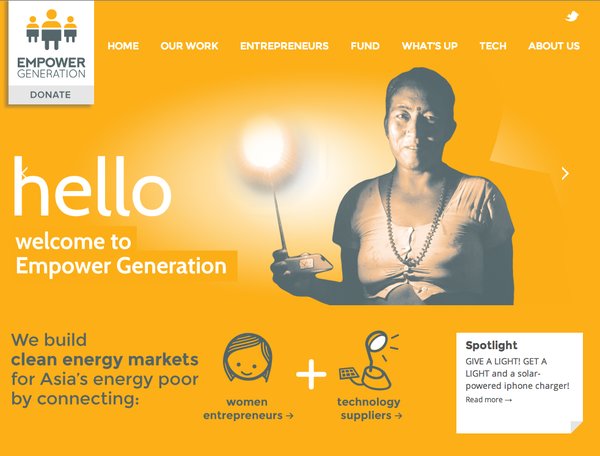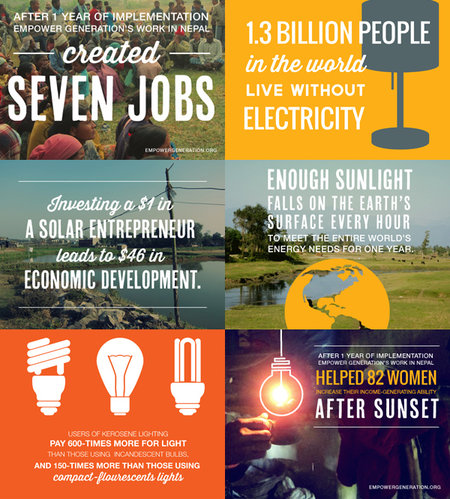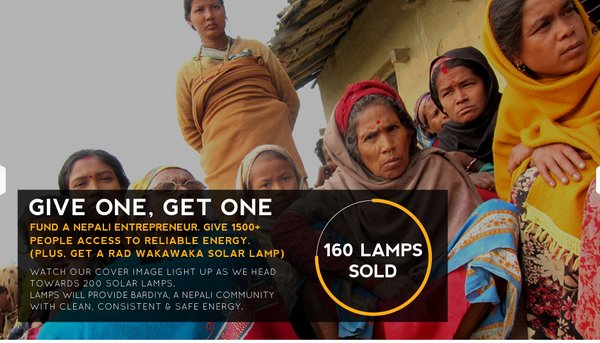Brands
How a Nonprofit Empowers with Content
There are two fundamental questions every nonprofit grapples with: How to make people care? And, how to turn caring into action?
For upstart organization Empower Generation, where I serve as the co-communications director, the answer needs to be as dynamic as the approach we take to our work on the ground. Which is why we’ve bypassed traditional fundraising for a content-based approach.

Fundamental to our work is the idea that people take ownership of issues when there is a financial investment. In our programming this translates into fueling the renewable energy economy by investing in women-led solar businesses in Nepal. The businesses are run and operated by entrepreneurs who serve people currently living in energy poverty (a staggering 60% of Nepali people lack access to reliable electricity, a fact that inhibits earning and scholastic potential).
We’re creating a loop of giving a damn, with discrete, actionable steps.
Our work is modeled as a revolving loan where entrepreneurs start solar energy businesses — solar replaces dirty, unsafe and unreliable kerosene lamps — and are ultimately responsible for repaying the loan so that we can later invest in another woman. In other words, by putting money on the line, we encourage entrepreneurs to have a stake in not only their own futures, but in other women, in ending energy poverty in Nepal, and in the grand scheme, in the expansion of the renewable energy economy.
We’re creating a loop of giving a damn, with discrete, actionable steps for women in Nepal to make a material impact on a whole host of ills.
It’s my job to sort out how EG accomplishes the same loop with our fundraising base. That’s where content comes in.
We are not an organization that’s looking for “give and go” donations. While we understand the value “individual donor” strategies where organization court a few high dollar funders, EG is equally focused on reaching a more democratic group. This is because we believe that tackling big problems — the trafficking of women into slavery, about the millions of people who die from respiratory infections caused by kerosene smoke inhalation — requires people to be personally invested.

Historically getting lots of donors has meant dumping tons of dollars into traditional communications models — advertising, PR campaigns, and the like. It’s also meant adopting singular umbrella messages that you blast out to demographically targeted groups. That’s not an approach that was available to EG; it’s not only beyond our budgetary realities to run a costly media campaign, it’s also too limited in terms of the many groups we need to talk to.
We believe that tackling big problems requires people to be personally invested.
We’re looking to impact change among diverse groups, from those interested in developing world gender politics to small-scale renewable energy buffs. Can you imagine creating an umbrella message that hits all of those? It would end up watered down sludge that said nothing compelling.
So what does EG’s board — a group of ambitious under 35s who’ve decided to take on the traditional model of forging change for women in the developing world, not to mention combat climate change one solar lamp at a time — do? Well, obviously they come up with a communications plan that addresses the most unique opportunities available in today’s information-sharing world.

In EG’s case that means content-based storytelling that spreads organically through our target audiences’ peer groups. In researching getting our message out there, we took a note from other orgs who’ve done content marketing, pulling from the best practices out there. What we’ve landed on is things like our most recent “Give One, Get One” campaign that takes place entirely on Facebook, and is reliant on the organic spread of statistics that tell part of the EG story.
Each stat uses a piece of information already in our back pocket, packaged in a way to appeal to a micro-audience: a stat about the power of small-scale investments speaks to finance types, while another on the risks of kerosene appeals to those sympathetic to challenges facing the world’s poor. By putting an audience-specific lens on our communications, we overcome what we at EG call “over there” syndrome — the tendency to look at the Third World as being irrelevant to our Western lives.
Using content — in this case the combination of pressing statistics and poignant imagery — we’ve made a reality about life in Nepal and the potential that donating to EG can have on Nepali people a very real, relatable thing.
It’s just the beginning for us and content.
Sternoff leads the Creative Strategy team at Captains of Industry, a boutique content marketing studio in Boston where she mashes up consumer insights with brand perspectives. She sits on the Board of Directors for the NGO Empower Generation. She’s a mean letterpress printer, sometimes designer and always Golden Girls fan.
Image by ShutterstockGet better at your job right now.
Read our monthly newsletter to master content marketing. It’s made for marketers, creators, and everyone in between.




